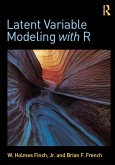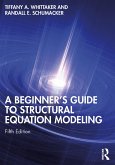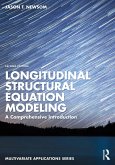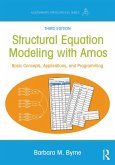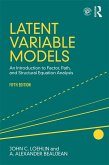Latent Variable Modeling with R:
-Provides some examples that use messy data providing a more realistic situation readers will encounter with their own data.
-Reviews a wide range of LVMs including factor analysis, structural equation modeling, item response theory, and mixture models and advanced topics such as fitting nonlinear structural equation models, nonparametric item response theory models, and mixture regression models.
-Demonstrates how data simulation can help researchers better understand statistical methods and assist in selecting the necessary sample size prior to collecting data.
-www.routledge.com/9780415832458 provides exercises that apply the models along with annotated R output answer keys and the data that corresponds to the in-text examples so readers can replicate the results and check their work.
The book opens with basic instructions in how to use R to read data, download functions, and conduct basic analyses. From there, each chapter is dedicated to a different latent variable model including exploratory and confirmatory factor analysis (CFA), structural equation modeling (SEM), multiple groups CFA/SEM, least squares estimation, growth curve models, mixture models, item response theory (both dichotomous and polytomous items), differential item functioning (DIF), and correspondance analysis. The book concludes with a discussion of how data simulation can be used to better understand the workings of a statistical method and assist researchers in deciding on the necessary sample size prior to collecting data. A mixture of independently developed R code along with available libraries for simulating latent models in R are provided so readers can use these simulations to analyze data using the methods introduced in the previous chapters.
Intended for use in graduate or advanced undergraduate courses in latent variable modeling, factor analysis, structural equation modeling, item response theory, measurement, or multivariate statistics taught in psychology, education, human development, and social and health sciences, researchers in these fields also appreciate this book's practical approach. The book provides sufficient conceptual background information to serve as a standalone text. Familiarity with basic statistical concepts is assumed but basic knowledge of R is not.
Dieser Download kann aus rechtlichen Gründen nur mit Rechnungsadresse in A, B, BG, CY, CZ, D, DK, EW, E, FIN, F, GR, HR, H, IRL, I, LT, L, LR, M, NL, PL, P, R, S, SLO, SK ausgeliefert werden.
"With this highly accessible, easy-to-follow, step-by-step guide for analyzing both simple and complex latent variable models in the increasingly popular R software program, Finch and French provide an extremely valuable service to researchers in various fields." - Christian Geiser, Utah State University, USA
"A major characteristic of this book is the user-friendly presentation of content and easy to follow examples. It provides excellent instruction to gain basic proficiency in the methods and reaches a large audience." - Karl Schweizer, Goethe University, Germany
"The book integrates technical details and examples in a way that is friendly to beginner users of structural equation modeling and item response theory, and helps readers assimilate the concepts and transfer to their own research needs." - Walter L. Leite, University of Florida, USA
"A cohesive and accessible resource for applying the R language to analyze data in a latent variable framework. ... I found what was written to be easy to understand. ... I would use it, recommend it to others, and likely adopt it as a supplemental text." - Natalie D. Eggum, Arizona State University, USA
"This book is truly unique. ...The writing style is clear and comprehensible. ... [It] will ... serve as a ... supplementary text in ... measurement, latent variable modeling, and IRT classes." - D. Betsy McCoach, University of Connecticut, USA
"This ... book covers all the latent variable models commonly used in social sciences. ... [It] can be used as a text ... for ... courses ... in ... structural equation modelling, psychological measurement, item response theory, and mixture model or latent class analysis. ... [It] makes a significant contribution to the field. ... I will use [it] as a supplement ... and recommend it to my colleagues who ... teach Psychological Measurement and Item Response Theory."- Ke-Hai Yuan, University of Notre Dame, USA
"The topic has the potential ... to be of broad interest in social, prevention, and public health sciences. ... [It] could be of great interest to ... my students in courses on latent variable modeling." - Patrick S. Malone, University of South Carolina, USA



